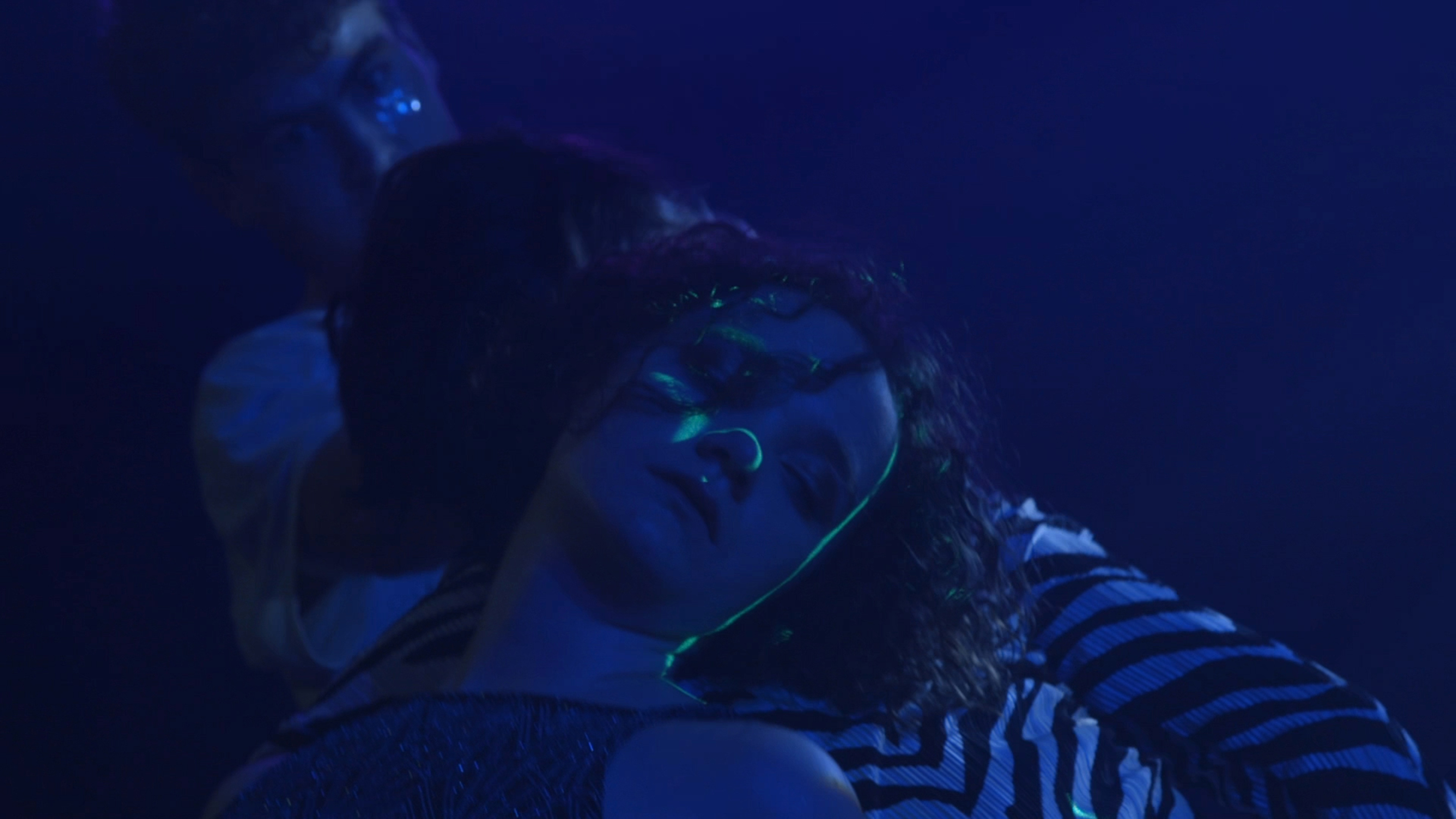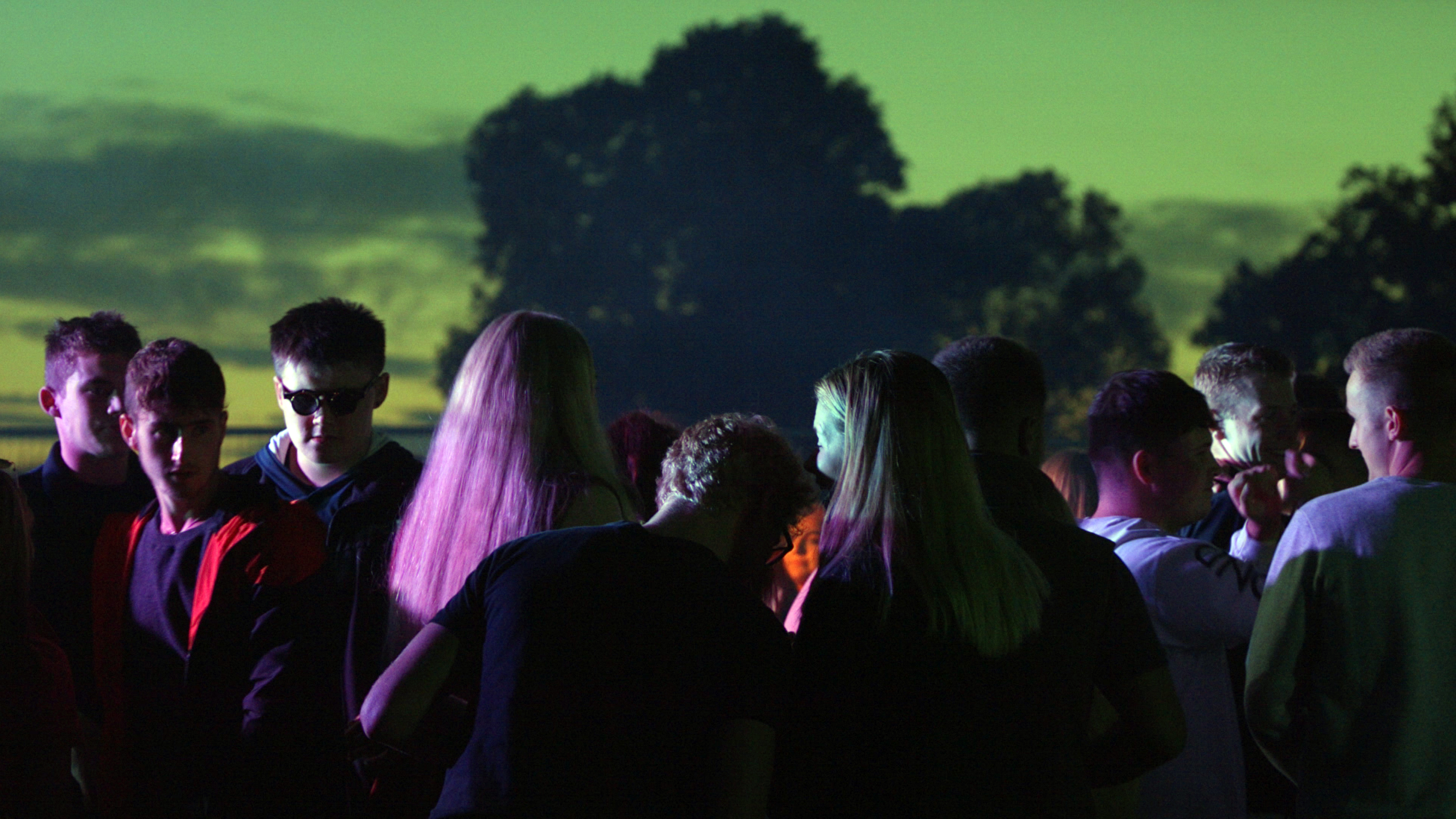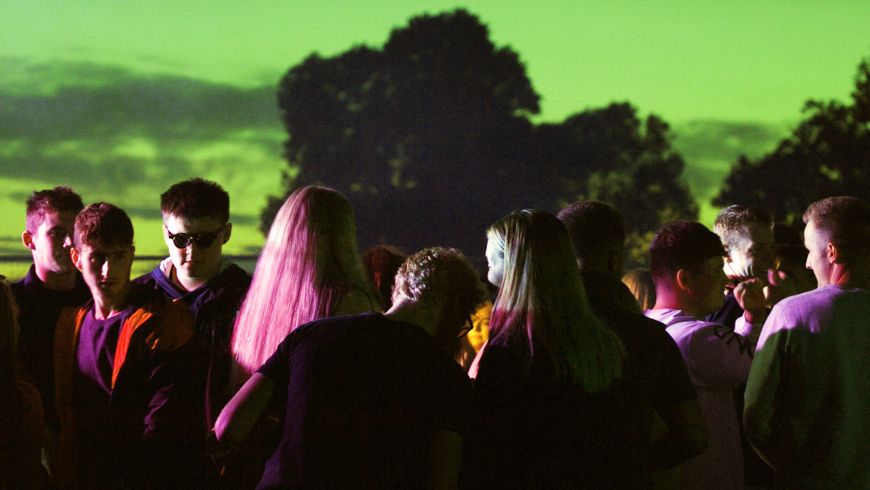Some notes on proximity and distance
Emily LaBarge
This creative-critical text responds to Webb-Ellis’s installation For The First Baby Born in Space.
Projects
Watch Webb-Ellis' For The First Baby Born in Space here
How to begin? At the edge of things.
The shore has a dual nature, changing with the swing of the tides, belonging now to the land, now to the sea, writes Rachel Carson in The Edge of the Sea. On the ebb tide it knows the harsh extremes of the land world, being exposed to heat and cold, to wind, to rain and drying sun. On the flood tide, it is a water world, returning briefly to the relative stability of the open sea. Indeed, a tideland is a vulnerable ecology — a liminal space, a shifting cusp, ever in flux. Might those who inhabit it, the tideland denizens, channel or embody similar characteristics? What might they observe, in this contemporary moment of waters and temperatures rising and receding with forceful oblivion? Perpetual uncertainty produces a strange and ineluctable complex of behaviours.
And so we have a split screen, two versions of the same reality: for one does not suffice, and is the loneliest number, as they say. For The First Baby Born in Space, a new film by artist-duo Webb-Ellis, begins and ends with the horizon: both channels are filled with the sea and the sky — a pale, hazy violet blue above blue grey chop, into which white flecks of gulls dive and crash. The two horizontals judder and slant; we are on shifting ground. The scene changes, and changes again. A boat, crewed by young girls, their skin shines golden in the sun as they row, heave, ho. Flames crackle and leap, a bonfire on the beach. Two blonde girls huddle in the whipping wind; a boy has his corn silk hair stroked and braided by a parade of hands, his cheeks flush pink. There is tenderness here, ritual and routine, comfort. More hands, more young people. They stick glitter on their faces, like brackets of stars around their eyes. They are getting ready, they await, as the evening light fades.
If there is a first baby born in space, what will have led to the occurrence? As I write this, an icy gale blows outside my window. Last week, it was blazing sun and 20 degree heat in February in London. I read of environmental activists gluing themselves to buildings; of the scientist who watched his entire butterfly population die; of the icecaps and glaciers, north and south, that melt as I type. I read of the non-existent ferry services to bring us goods, post-Brexit, when these tideland outposts and their citizens will be even more exposed than they are now. This is not an apocalypse, not yet. But we are looking for answers about what the future might hold. On a bus, I heard a man talking about the children who walked out of school to protest climate change. ‘Why didn’t we all join them?’ he asked. Nobody replied.

For The First Baby Born in Space vividly captures a group of youths in a coastal town in the North of England, over the scorching summer of 2018. They have much to say, though they do not always know how to articulate themselves. From the bonfire beach they move to a pier, then to a boardwalk funfair where neon lights blink, rides tilt and wheel and music studs the frenzied night air. The youths begin to move, sway, dance, rollick. They touch each other’s bodies, lean and caress; they move apart, dance alone. On the dark beach, illuminated by a single beam, they speak directly to the camera. I’m more afraid of failure than dying, if that makes sense. I feel like no adult wants to talk to me, says one.
Maybe our life right now is all a dream, and when we die, we wake up and live another life, says another. A boy gestures to the sky, traces the big dipper and the north star. A girl speaks of how she hates loneliness. They note disturbances in the air, forces bigger than themselves. Fireworks explode in the distance. This island, a single star, slips away from its bright blue constellation.
Why should I be lonely? Is not our planet in the Milky Way?, asked Henry David Thoreau. We are all in the gutter, but some of us are looking at the stars, wrote Oscar Wilde. The stars are not hereditary, said Emily Dickinson. But something is being handed down. Webb-Ellis capture this undeniable, impalpable, heated thing with care and perspicacity.
How to end? At the edge of things.
For the first baby born in space, for the last baby born on earth, do we compose an elegy, a dirge, a time capsule sent into deep space? Dear Earth, dear Here and Now, we will miss you so. Let us, for a moment, revel in the dying light, the glittering skies, the explosions of colour above. Pull back, zoom out, pan wide. Let your eye stretch and skitter along the long horizon that beckons and shimmers in the distance. Or, as the poet Anne Carson writes in ‘Town of My Farewell to You’:
Look what a thousand blue thousand white.
Thousand blue thousand white thousand.
Blue thousand white thousand blue thousand.
White thousand blue wind today and two arms. Blowing down the road.
Colours continue, language, movement, communion endure, across the screen, down the page, in spite of it all.
What will the first baby born in space think? What do we want her to know? That it was ordinary here, too, and spectacular. That it was many things, dazzling, heaving, flashing, waving, smashing, floating, blissful things.
Everyone make a wish, a young girl says at the end of the film, at another bonfire on the beach.
I close my eyes.
–––
Emily LaBarge is a Canadian writer based in London.
This text was written in response to For The First Baby Born in Space (2019) by Webb-Ellis was commissioned for the Jerwood/FVU Awards 2019: Going, Gone, a collaboration between Jerwood Arts and Film and Video Umbrella.

